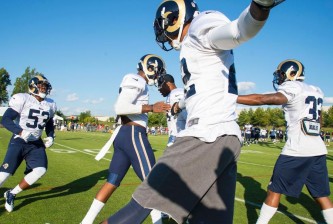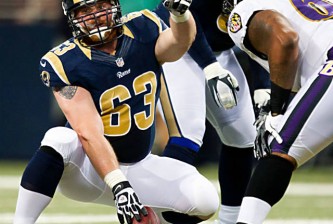
Exploring the effects of football injuries that can’t be seen.
Part 1: Tackling the Unknown.
Part 2: The Disease the NFL Wanted to go Away.
Part 3: A Light in the Darkness.
Mike Webster snapped every ball for the Steelers for ten consecutive years, a hero with four Super Bowl rings. Fred McNeill capped a 12 year career with the Vikings by making partner in a law firm. Shane Dronett was never a star, but after ten years in the league was able to provide a fine life for his family, and was just beginning to live it.
Before each man had turned 50, his life had imploded, felled by a brain disease that, until last year, the NFL refused to acknowledge.
Webster forgot how to eat, and would taze himself to unconsciousness just to get some sleep. Paranoiac fears invaded Dronett’s dreams and his waking life, until the only escape came from a gun turned on himself. McNeill lives in a fog, unable to work, barely tethered to reality by his ex-wife.
These are just four of a growing number of horror stories that have altered the field of brain science, and changed the way the league considers player safety.
Part 1: Tackling the Unknown: The Emerging Science of the Brain.
Of all the parts of our own body, scientists know the least about the functioning of the brain. As we dissect the essence of humanity down to its building blocks, we know more about the genetic code that inhabits each of our cells than we do about the three-pound lump of intricately folded gray matter that sits in our skulls. However, that may soon change.
The NIH has funded two separate projects in the last year totaling more than $36 million dollars just to build a map of the brain’s internal network: a “connectome” that models the connections of neurons within the brain, to rival our knowledge of the “genome” that models the possibilities of our genetic code.
However, there are at least ninety billion neurons in the brain — a thousand times more than genes in our DNA — and our ability to learn makes it a living network. I can’t learn my blue eyes to green, or my light skin to dark. But the networks in our brains can and do evolve on a daily basis, shaped by our experiences, our inferences, and even our ignorances. Even if I could build an anatomically complete model of your brain today, capturing each synaptic connection, I couldn’t use that model to tell you what you’re thinking, or who you are.
This is the puzzle that neuroscientists find so fascinating, and so difficult to solve.
One scientist based here in St Louis, Dr. Marc Raichle, made a fundamental discovery a few years ago that laid the groundwork for projects like the Connectome: that each of us has a “Default mode network.” In the moments between activities, our brain is busily at work, accessing memories, considering the people that surround us, shaping the potential courses of our future decisions and actions to come.
It is precisely this network in the brain — this ongoing definition and reinforcement of our selves — that is attacked by Alzheimer’s Disease. And by CTE, the disease found in the brains of Mike Webster, Fred McNeill, and dozens of other retired NFL players.
Read Part Two: The Brain Disease the NFL Wished Would Simply Go Away.






















